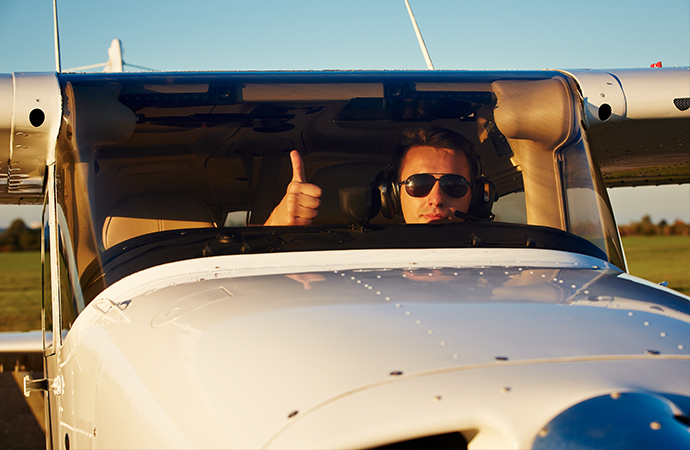How to attend a Minnesota flight school, save money, and stay on course
When aspiring pilots in the Twin Cities area talk to us about flight training and earning their PPL, we consistently start by telling them that planning makes all the difference.
Here’s why:
- It forces you to look realistically at what’s involved
- It alerts you to efficiencies in time and resource management
- Planning lays the groundwork for the habits that produce good pilots.
But planning is just the beginning. As you select a flight school in Minnesota to earn your PPL, there are other things to remember. Here are the ones we at Twin Cities Flight think are important.
- Break down the total time required. The Federal Aviation Administration states that a minimum of 40 hours of flight time is required, and that the total average number of hours it takes to complete PPL certification requirements is 75. Make sure you understand the time commitment to working with an instructor, doing solo flight time, cross country flight time, night flying time, and instrument time. For each hour of flight training, you should spend 2-3 hours self-studying the ground training.
- Simulators can reduce expenses. Today’s simulators can reduce the cost of instrument training by 20-25% – and give you the experience of practicing emergency events and circumstances that would not be possible in an aircraft. NOTE: Twin Cities Flight uses the advanced Redbird MCX Flight Simulator. See what it can do.
- Aircraft rental and Instructor costs. The discussion about PPL costs never stops, but we want to touch on two key variables. 1. Airplane rental. This can be 50% of the cost of your flight training, so allocate resources accordingly. Learning on planes with analog instruments can save money, as can flight simulators (see above). 2. In our experience, students who “get” their instructors seem to learn more efficiently (it makes sense), so spend some time finding an instructor who fits your personality and learning style. Time, once again, is money.
- Wet vs Dry costs. Simply put, a “wet” aircraft rental is one that includes fuel (and oil), whereas “dry” agreements do not. Wet rentals offer convenience and time savings. Dry rentals are generally less costly, but may require separate payment for fuel, crew (if necessary), maintenance and insurance. Do the math and have a detailed discussion with your flight school about their agreements. Don’t get pressured into making a decision until you’re ready.
- Make written exams a priority. Many up-and-coming pilots focus on flight training at the expense of test prep. Online study tools and practice tests can be useful, but we believe there’s value in formal ground school coursework. Online study materials may give you general knowledge, but one-on-one instruction with our instructors can give you Minnesota specific knowledge on weather, airports, and flight characteristics. Last piece of advice: It’s a good idea to stay current with FAA exam changes.
Getting your PPL from a Minnesota flight school starts with choosing the right flight training center. Consider Twin Cities Flight. We’re ready whenever you are.

